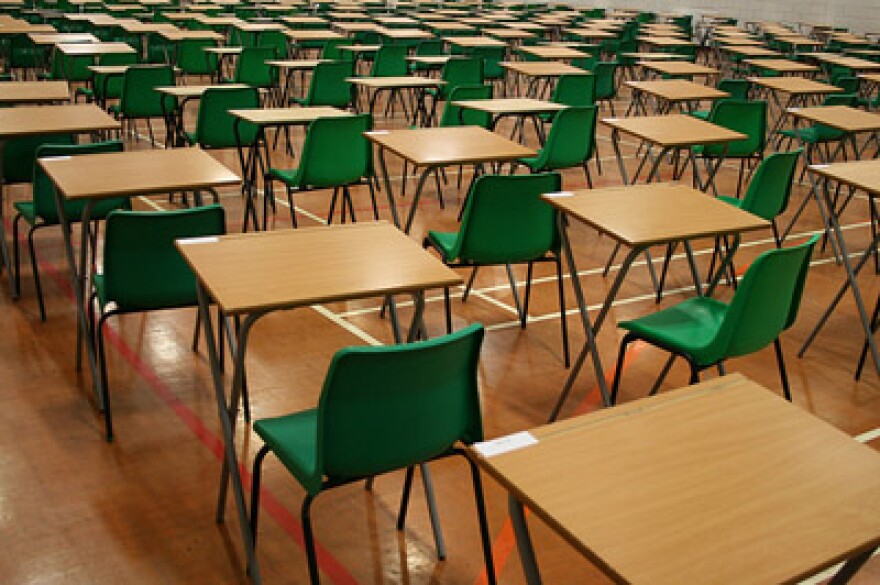Eligibility requirements and classes geared for special interests and abilities apparently are not enough of an attraction for some parents with other options at their disposal when faced with St. Louis Public Schools’ overall tarnished reputation.
The district has more than 1,400 open slots for students to enroll in its choice and magnet high schools for the upcoming 2016-2017 school year.
But the schools aren’t scrambling to process last minute applications — enrollment is pretty much set, according to St. Louis Public Schools’ executive director of recruitment and placement, Lou Kruger.
“The district has an awful lot of capacity in our high schools, so in the magnet schools and in our comprehensive (schools) there are just a lot of open seats that are available there,” Krueger said.
“As enrollment in the district has dropped for whatever reasons that may be, whether that’s competition, charter schools, parents leaving the city, it’s not as easy to fill up those empty seats as it used to be.”
St. Louis Public Schools has seven magnet high schools, three choice high schools, and three comprehensive high schools with no application required.
Krueger said the three highest performing high schools — Metro Academic and Classical, McKinley Classical Leadership Academy and Collegiate School of Medicine and Bioscience — tend to fill up, but the district’s other schools usually have plenty of room to spare.
As of the end of May, Metro was the only magnet high school at full capacity. U.S. News and World Report considers Metro the second best high school in Missouri.
While admittance requirements range from a minimum GPA to high scores on state tests and qualifying as gifted, Krueger said eligibility is only a small part of why the district’s magnet and choice high schools are expected to stay at about 77 percent of enrollment capacity this year.
“There just aren’t that many high school-age children in the city who even exist — who even live in the city. There isn’t a great deal of competition in our high schools from charter programs. There are only three charter high schools and all of them are relatively small,” Krueger said
According to the U.S. Census, almost 20,000 children between the ages of 12 and 17 lived in St. Louis in 2014. Last year St. Louis Public Schools had a little more than 6,600 high school students.
But St. Louis Public Schools also competes with parochial and private schools, in addition to charter schools.
Krueger said part of the reason magnet high schools have a harder time filling all of their open slots is that the buildings are larger compared to middle and elementary schools, which were built as small neighborhood schools intended to feed into a handful of high schools.

Preschool and early elementary also have smaller class sizes by state law.
“Parents who have students looking to go into a magnet school, they’re typically trying to get them in at an earlier grade level — preschool, kindergarten, etc. — so when it gets to the later grade levels we don’t have as much interest even though we have more openings,” Krueger said.
But Krueger said it would be difficult to add another magnet elementary school because that would likely mean closing a neighborhood school.
“It really is a matter of we just have a lot of open seats in these bigger buildings because there just aren’t enough children in eligible areas to attend. Now if we drew more students in from the county, that’d be different. But we don’t,” Krueger said.
Under the voluntary desegregation program, city magnet schools are open to St. Louis County students who are not African American, if they live in a participating school district.
“While we have made some inroads in some high-achieving schools in getting and attracting more county students in, the numbers have really dwindled in terms of how many students from St. Louis County attend city schools,” Krueger said.
“A lot of it goes back to when the (voluntary desegregation) settlement agreement occurred,” Krueger added. “1999 is when our numbers started to fall. You can also look at the district has been recently unaccredited as well as provisionally accredited. Some parents are probably not interested.”
Enrollment in St. Louis Public Schools has dropped almost 50 percent in the last 15 years as the district struggles to regain good standing in the eyes of the Missouri Department of Education.
In 2000, when St. Louis Public Schools was still fully accredited, the district had more than 44,000 students. From 2001 to 2007 the district was provisionally accredited. St. Louis Public Schools was unaccredited from 2008 until 2013, when it regained provisional accreditation.
Last year the state gave the district a high enough score to regain full accreditation, but the state board of education voted to hold off on restoring St. Louis Public Schools’ status.
Follow Camille Phillips on Twitter: @cmpcamille.





